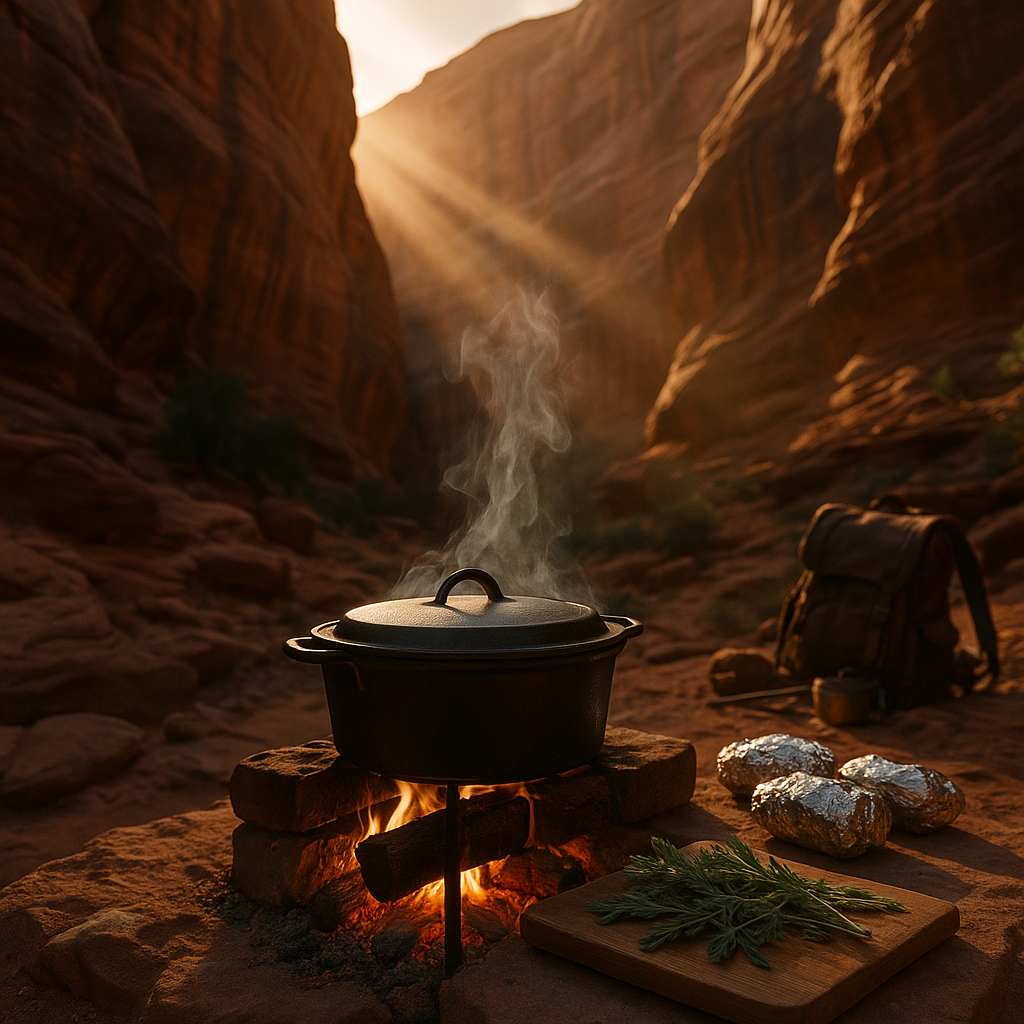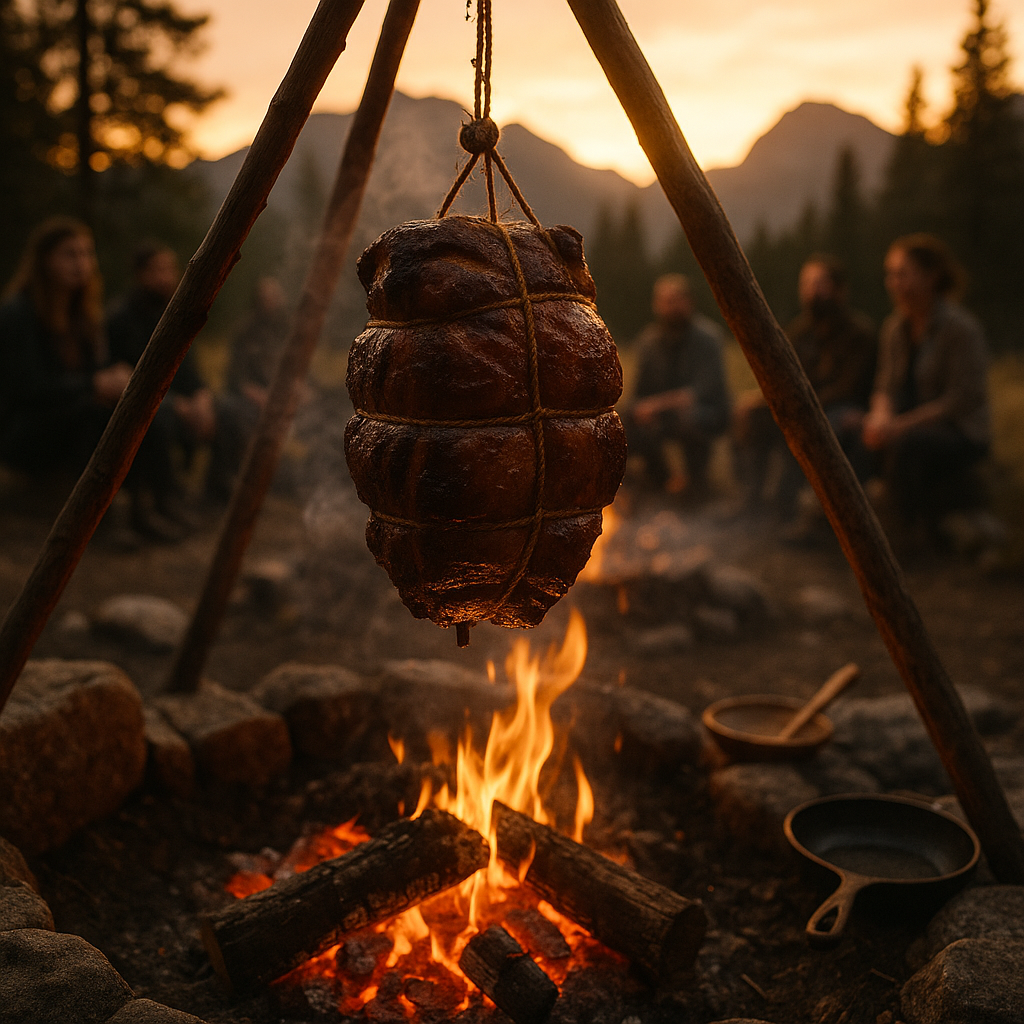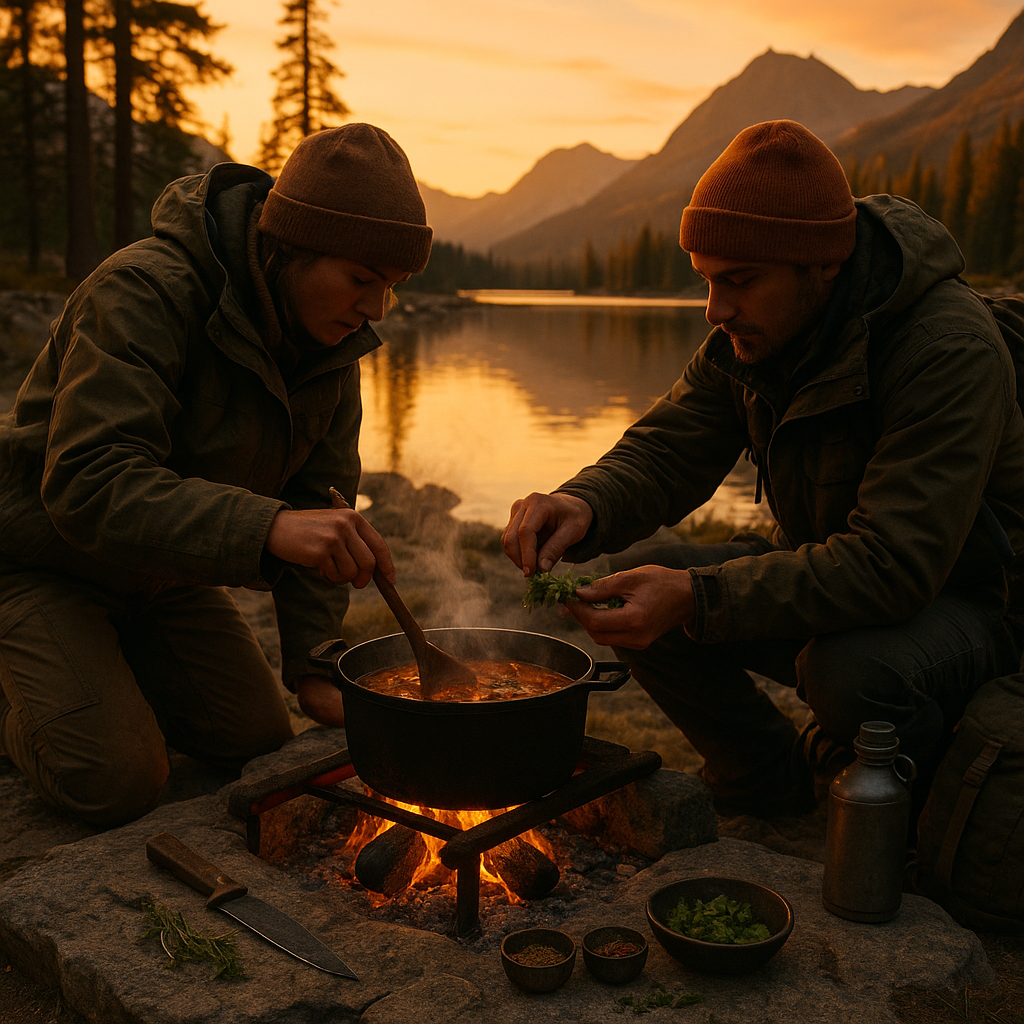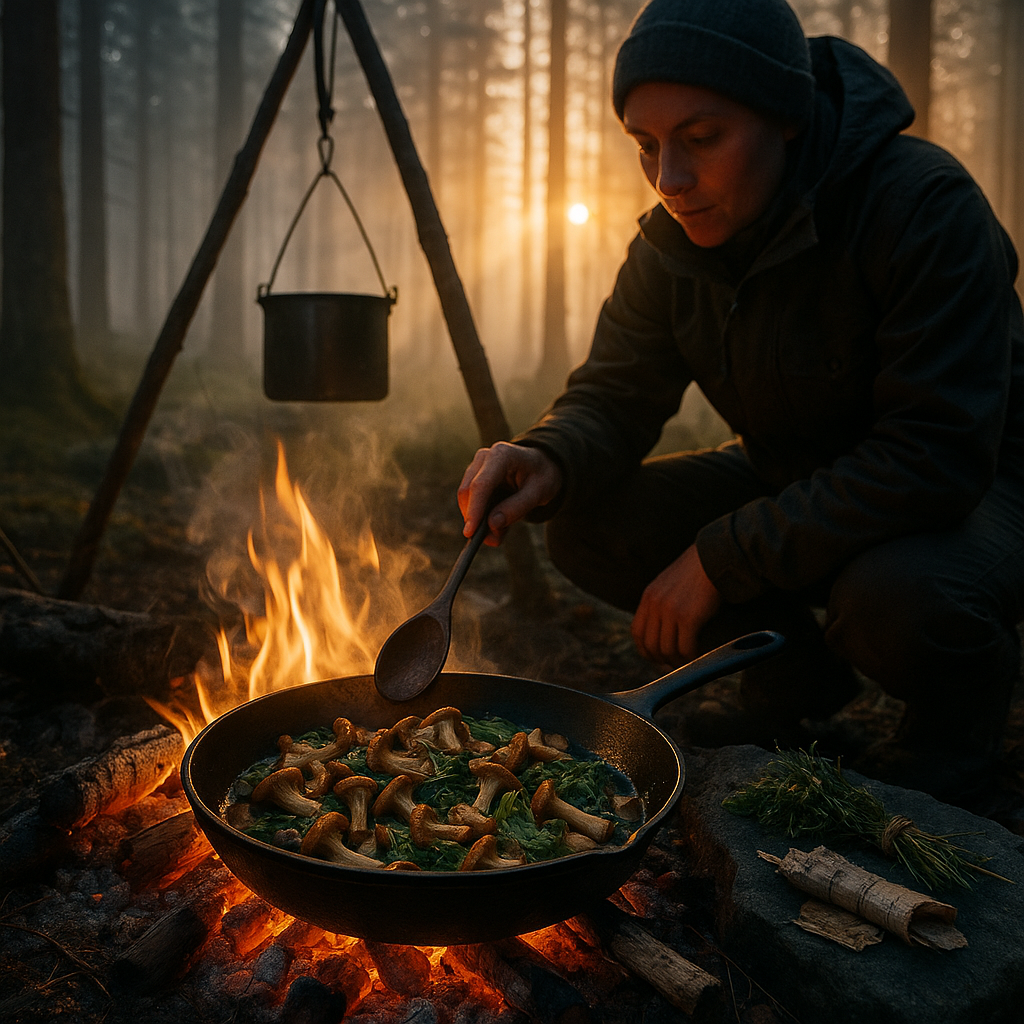Key Takeaways
- High altitudes demand mindful culinary adjustments. Elevation alters boiling points and cooking times; water boils faster but at a lower temperature, requiring tweaks to recipes to consistently achieve the desired results.
- Canyon acoustics transform the cooking experience. The natural reverberation of canyon spaces amplifies even the faintest sounds of sizzling or stirring, turning meal preparation into an all-encompassing, deeply immersive auditory experience.
- Foraging brings local flavors to life. Many canyon environments offer abundant wild herbs, berries, and greens, infusing meals with unique, hyper-local flavors that can only be found in these wild settings.
- Outdoor cooking thrives on simplified techniques. Methods like foil-packet meals and one-pot stews shine in canyons, reducing the need for bulky gear while maximizing robust flavors in rustic conditions.
- Embrace nature as a dining companion. The interplay of sunlight, shifting shadows, and canyon whispering winds creates an unparalleled dining ambiance, transforming even the most understated meal into a memorable feast.
- Elevation deepens the sensory connection to food. High-altitude air sharpens flavors, intensifies aromas, and heightens the tactile enjoyment of every ingredient, fostering a profound bond between you, your food, and the majestic surroundings.
Canyon cooking is more than just feeding the body; it is a celebration of connection among earth, air, and human creativity. Step into the world of canyon whispers and high-altitude recipes, where every meal is shaped by the landscape’s drama, the chemistry of elevation, and the artful interplay of sound and light.
Introduction
Imagine the scent of wild sage drifting on a brisk canyon breeze, mingling with smoke curling from a campfire as echoes ripple off ancient stone. Here, every meal becomes an invitation, to listen with your whole being as much as you taste. Canyon cooking transcends the ordinary act of preparing food outdoors; it’s a communion of elevation, atmosphere, and the primal joy of creating sustenance at the border of earth and sky.
Shadows wander across weather-polished rock, and bubbling pots dance in the cool, rarefied air. The high altitude transforms even simple recipes: water simmers with new urgency, tastes intensify, and the acoustics turn every sizzle and stir into nature’s own symphony. Foraging for hidden canyon herbs, cooking beneath ever-shifting light, and dining beneath the vaulting stone bring wonder to the table.
Join us as we explore how the canyon environment shapes each bite and each note, unraveling the extraordinary art of cooking in a world where echoes and elevation redefine the very meaning of a meal.
Stay Sharp. Stay Ahead.
Join our Telegram Channel for exclusive content, real insights,
engage with us and other members and get access to
insider updates, early news and top insights.
 Join the Channel
Join the Channel
The Symphony of Canyon Acoustics in Outdoor Cooking
Canyon walls rise around you, forming a natural amphitheater where the sounds of cooking become heightened. Each pop of pine kindling, every sizzling chorus from a cast-iron skillet, and the gentle bubbling of stew all reverberate and shift with the stone. These unique acoustic properties enhance the sensory joy of cooking, but they also serve a practical purpose for the wilderness chef.
Sound becomes a guide. Canyon echoes allow experienced cooks to sense when dishes are ready, even after the sun dips behind the cliffs. The crisp crackle of bacon, the subtle shift in bubbling water, or the low hum of a well-tended fire all reveal vital information about your cooking progress when sight alone cannot. As dusk settles and visual cues become unreliable, sound becomes your partner.
Leveraging Natural Acoustics for Better Cooking
Understanding canyon acoustics is a skill that turns meal prep into performance art. As fat renders, the shift in sizzle becomes unmistakable against the stone, a cue that meat is perfectly seared. The ping of a heating Dutch oven signals rising temperatures, while the hollow tap of a preheated skillet echoes readiness. Harnessing these cues transforms simple cooking into an artisan’s craft:
- Listen for the hollow ring when you tap your skillet; it means the pan is hot enough and ready for action.
- The steady rhythm of a simmering stew can guide your fire adjustments, ensuring flavors meld without overcooking.
- Cracking kindling is more than fire prep. The pitch and clarity let you judge if your wood is dry enough to burn cleanly, saving precious effort in remote wilderness.
These heightened auditory cues are not just novelties. They are essential tools that connect you deeply to the environment and the food you create.
Elevation’s Impact on Culinary Chemistry
Beyond sound and sight, elevation carves its mark into every recipe. In the canyon’s lofty arms, atmospheric pressure shifts the rules of the kitchen. Water boils at a lower temperature, about 1°F less for every 500 feet of elevation. This alteration ripples through every aspect of outdoor cooking, demanding thoughtful attention to technique and timing so that flavors and textures stay true.
Mastering High-Altitude Adaptations
Traditional recipes become a starting point rather than a blueprint. Baking breads or simmering stews requires improvisation: leavening agents behave unpredictably, evaporation quickens, and what cooks fast at sea level lingers here, stubbornly unfinished. A roast at 7,000 feet may ask for a quarter more time to reach perfection.
For high-altitude success:
- Boost liquid content by 2 to 4 tablespoons per 3,000 feet of elevation; this compensates for faster evaporation in the dry, thin air.
- Reduce leavening agents by approximately 20% above 5,000 feet to prevent over-rising and collapsing cakes or breads.
- Raise oven or campfire temperatures by 25°F for every 5,000 feet; this helps achieve proper browning and thorough cooking.
These adjustments do more than just tweak the recipe. They deepen your awareness of the land and unlock new flavors rarely found beneath city lights or kitchen ceilings.
Dancing with Canyon Winds and Temperature Gradients
Canyons create their own microclimates, challenging and rewarding in equal measure for those who know how to adapt. Morning air climbs, bearing wood smoke and breakfast scents aloft, while evening air flows downward, chilling the rocks and rushing around your camp. These natural shifts redefine your cooking rhythm.
Understanding and anticipating the dance of canyon winds can elevate your meals from practical to poetic. Smoke that once stung your eyes now rides the updraft, while cool evening breezes make you reconsider where to build your fire. Harnessing these air patterns is part art, part science.
Working with Natural Air Flows
Mastering the canyon’s daily wind patterns turns obstacles into assets. Morning updrafts can pull smoke away, making breakfast a delight beneath blue skies. At dusk, when cool currents sweep down, strategic fire placement keeps smoke at bay and holds steady heat for the evening meal.
Tips for Wind and Weather Mastery:
- Choose your cooking spot to take advantage of updrafts; avoid low ground at night to escape smoky air.
- Utilize boulders or canyon alcoves as natural windbreaks during turbulent weather, offering both shelter and increased fire control.
- Monitor the air’s movement before you strike a match, adapting your fire’s size and location to optimize both comfort and cuisine.
By shaping your cooking style to the whims of canyon wind, every meal becomes a seamless part of the surrounding landscape.
The Art of Fire Management in Canyon Settings
Fire is a living element in canyon country, affected by shifting air, stone, and the reduced oxygen of higher elevations. Achieving consistent, efficient heat requires a thoughtful response to these variables. Rather than imposing your will on the environment, successful canyon cooks learn to build and maintain fires that respond to the land itself.
Building the Perfect Canyon Cooking Fire
In the canyon, your fire is a partnership between fuel, place, and air. Choose hardwoods that offer lasting coals and steady heat, and situate your fire in a rocky alcove or on an elevated platform to protect fragile ground and improve airflow. The arrangement of your fire and careful monitoring of its needs become central skills.
Key fire-building practices include:
Stay Sharp. Stay Ahead.
Join our Telegram Channel for exclusive content, real insights,
engage with us and other members and get access to
insider updates, early news and top insights.
 Join the Channel
Join the Channel
- Select dense hardwoods (such as oak or maple) that produce slow-burning coals, perfect for long stews and roasting.
- Build fires in existing stone recesses or create small rings with found rocks, which both conserve heat and shield the area from stray sparks.
- Prepare elevated fire platforms to minimize impact on fragile canyon soils and allow better airflow beneath the flames.
- Carefully observe shifts in wind, adjusting fire placement and size so that your meal cooks evenly without thick smoke overwhelming the campsite.
Every fire you build becomes a collaboration with the land. Each adjustment a conversation with wind and stone.
Applications Beyond Canyon Walls
While the art of canyon cooking is





Leave a Reply